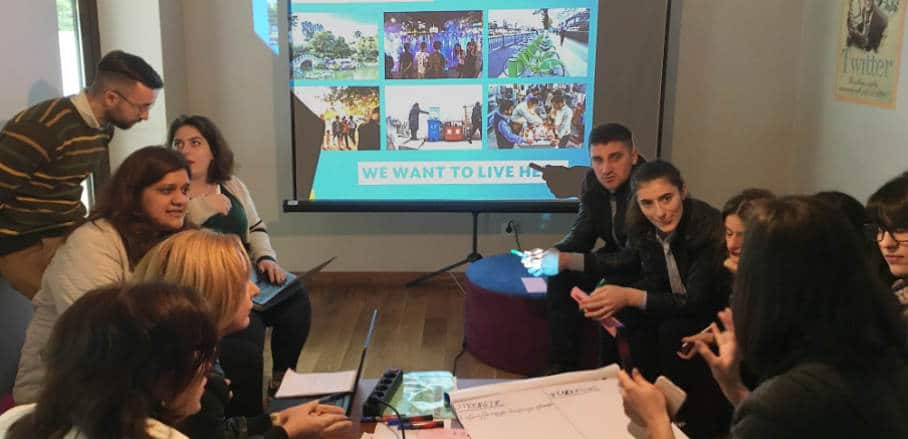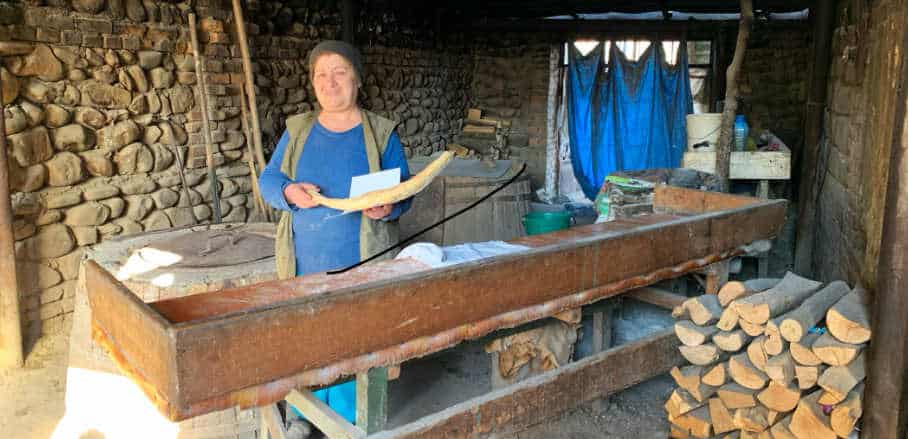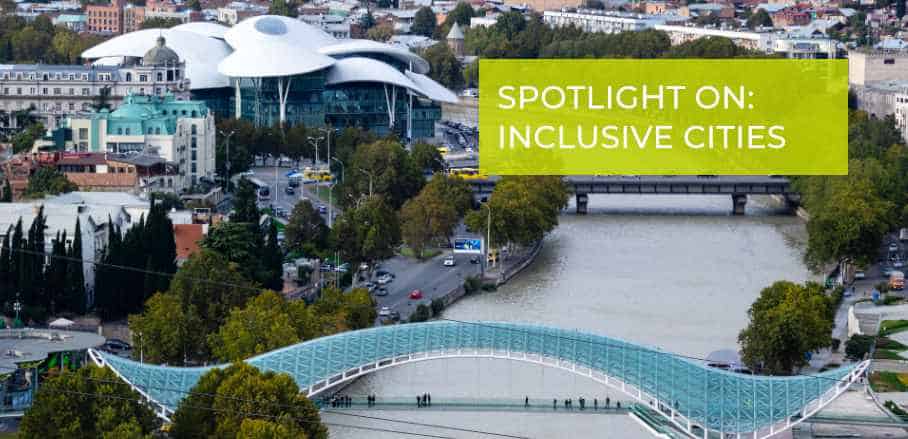Sparking Transformation Towards Inclusive Cities in a Post-Pandemic World
The global pandemic presents us with many challenges. But the current digital transformation may also be a powerful tool for inclusive city planning. Ramola Naik Singru from the Asian Development Bank highlights key learnings.
The world as we know it has changed drastically and with it our interactions with people and our physical environment. Our vocabulary includes phrases like “the new normal” and “WFH” – work from home – as we embrace the virtual reality of telework and the physical reality of work from home. Just as our lives have been changed by the pandemic, the way we use and plan our cities must change too. This is an opportunity for disruptive transformation.
Governments and organisations are now learning altered modes for the way we can work, live and play. This changes the way our cities will be redesigned in the future. Equally important has been the change in our physical environment during this pandemic. We have seen bluer skies, greener grass and cleaner air. To retain the positive impacts of these changes, these key lessons can guide us.
A City for All Should be Planned by All
People make cities – they should be the planners of the spaces they live in. As we move forward into a transformed “normal”, participatory planning becomes increasingly important to ensure an economic recovery that includes all elements of society. The pandemic has had huge economic effects on people’s livelihoods, especially the informal sector and on micro, small and medium-sized enterprises. To bounce back better, their voice is critical in any transformative process.
Take Georgia, for example, where a collective city vision and prioritised investments included the views of the young, elderly, women, persons with disabilities, even children, along with business groups, civic organisations and government officials, to develop integrated urban action plans from 2016 under the Livable Urban Areas project.

Livable Cities Visioning and SWOT analysis with a youth group in Zugdidi, Georgia © Ramola Naik Singru, 2017
This provided a platform for engaging across national, regional and local governments to align strategies with local needs and achieve a balance in the competing priorities for infrastructure investments. Guidelines were prepared that translated international standards for accessibility and universal design for the application in Georgia to the benefit of persons with disabilities, the elderly and young children. The government of Georgia also initiated reforms and adopted a new national standard on accessibility.
This illustrates how a bottom-up participatory approach can have far-reaching results. The Livable Cities approach addresses the needs of the most vulnerable people while adopting solutions based on the unique competitive advantage of each city. This supports a strong and resilient recovery and a “city for all”.
Rebuild, Re-skill, Recover
The COVID-19 pandemic has truly changed the rules of the game. People and businesses adopted e-commerce platforms to stay afloat, while educational institutes and students adapted to e-learning.
A disruptive transformation always capitalises on creativity and innovation in any sphere of work or the market. This will be the crux of the economic recovery. People will need to re-skill themselves to the changing modes of work as new jobs will emerge while some will become obsolete. City spaces, offices, homes will need remodelling to accommodate repurposed uses with increased teleworking and time-sharing.
In such a dynamic future, cities will have to redefine themselves by enhancing inherent assets with flexible alternatives. For example, museums are providing 3-D tours and virtual reality experiences, outdoor open spaces are repurposed as multi-purpose activity spaces for yoga, sports, exercise, walking tracks and so forth.
Another example are the small and medium-sized businesses that offer tourism services, but often lack resources. Government agencies and the private sector will need to collaborate to help these enterprises in meeting international quality standards concerning safety, accessibility, hygiene, service, and hospitality amongst others.

Manana Kardenakhishvili, a woman entrepreneur and traditional bakery owner in Velistsikhe town in North Kakheti region of Georgia, plans to provide a hostel for tourists through a government-supported SME programme for Livable Cities © Ramola Naik Singru, 2019
Although the pandemic has dealt a big blow to the tourism industry, Central Asia is positioning itself to benefit from emerging tourism trends such as the demand for safe, sustainable tourism and authentic, experiential travel, once global travel recovers. In December 2020, the 11 members of the Central Asia Regional Economic Cooperation (CAREC) Program – a partnership to promote economic growth and development through regional cooperation – endorsed a long-term strategy to improve tourism in collaboration with multiple stakeholders.
The consultations with private sector tour operators, airlines, government officials, and tourism agencies were all conducted virtually through surveys, focus group discussions, telephone conversations and workshops. Such proactive and inclusive efforts will ensure that economic recovery is built on the region’s assets.
Innovation, Agility and Cultural Transformation
Technology should make life in our cities safer, and better. The disruption fast-forwarded the reality of a smart city yet highlighted digital infrastructure gaps and unequal access for citizens. Addressing these issues for increased digitisation and innovative technologies will be critical for governments in ensuring an effective response in managing the crisis.
A cultural transformation is ongoing with citizens, young and old, showing agility in embracing the digital change – from contact tracing to online groceries and utility bill payments to e-learning and socialising. Cities need to provide support in the use of apps for services, especially for the elderly, establishing systems for data collection and dissemination, and removing the barriers to entry for disadvantaged and vulnerable groups for jobs and training.
Innovation challenges, incubator labs, and hackathons are encouraging the private sector to think differently in resolving some immediate and future needs to design cities with improved quality of life.
The dramatic changes forced upon us by the pandemic will have a long-lasting impact. If addressed proactively, one of them will be to make cities more open, accessible and inclusive to all.
